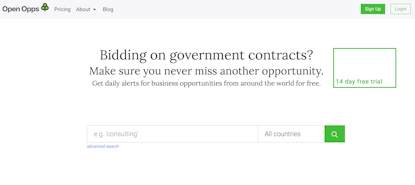The power of the open contracting data standard as a research and business tool

At the heart of fighting corruption in public procurement is the capacity to bring together data from across the world under a common standard for analysis. At Open Opps (www.openopps.com), we’ve adopted the Open Contracting Data Standard (OCDS), with the support of the Open Contracting Partnership, to produce the world’s biggest repository of open contracting data that can be used by researchers to investigate fraud and irregularities. At the same time, we’ve built a new, commercial website that helps businesses find opportunities to trade with government. As of July 2016, we have been able to pull in a quarter of a million documents in OCDS from across Europe.
There are many advantages to using the OCDS. As more governments publish their procurement information in line with the standard, it will become easier for us to gather the data, ready for publishing on OpenOpps.com, a website that allows businesses bidding on government contracts to see tenders from around the world for free.
But one of the main reasons we’ve adopted the standard is because it makes good business sense. By adopting the standard, we don’t have to do the heavy lifting of building a data schema with appropriate levels of interoperability, the right identifiers and a framework that can be deployed globally. Having the standard has saved us many, many hours of work, and it means our product will always be built on a robust, technically sound data schema. We’ve been able to create a global resource for tenders in just 12 weeks because of the work done by the team at the Open Contracting helpdesk (thank you guys!).
Based on our experience with implementing the standard, we’ve put together a draft plan for rolling out OCDS, including a list of key considerations that need to be reviewed for a successful project.
Our work with the OCDS has allowed us to make interesting observations on public purchasing data.
For example, we have analyzed a sample of what is being published in different countries and consistently found discrepancies between opportunity notices issued and contract award documents published. Even where the data lies on the same platform, and is therefore easy to connect, we estimate that around 40% of contract award notices aren’t published and those that are published are frequently incomplete. Public sector bodies are often required to publish contract award notices by law (this is certainly true of EU member states). However, our research shows that these legal mandates are insufficient to elicit consistent publication. It seems too easy for public bodies to commit to transparency without actually completing the task required, so it’s likely that there’ll be a long road ahead before we can secure good, open contracting data for many governments.
Nevertheless, our work using open contracting has enabled us to enrich the open data landscape for research while providing a basis for our own business, proving the versatility and usefulness of the OCDS.